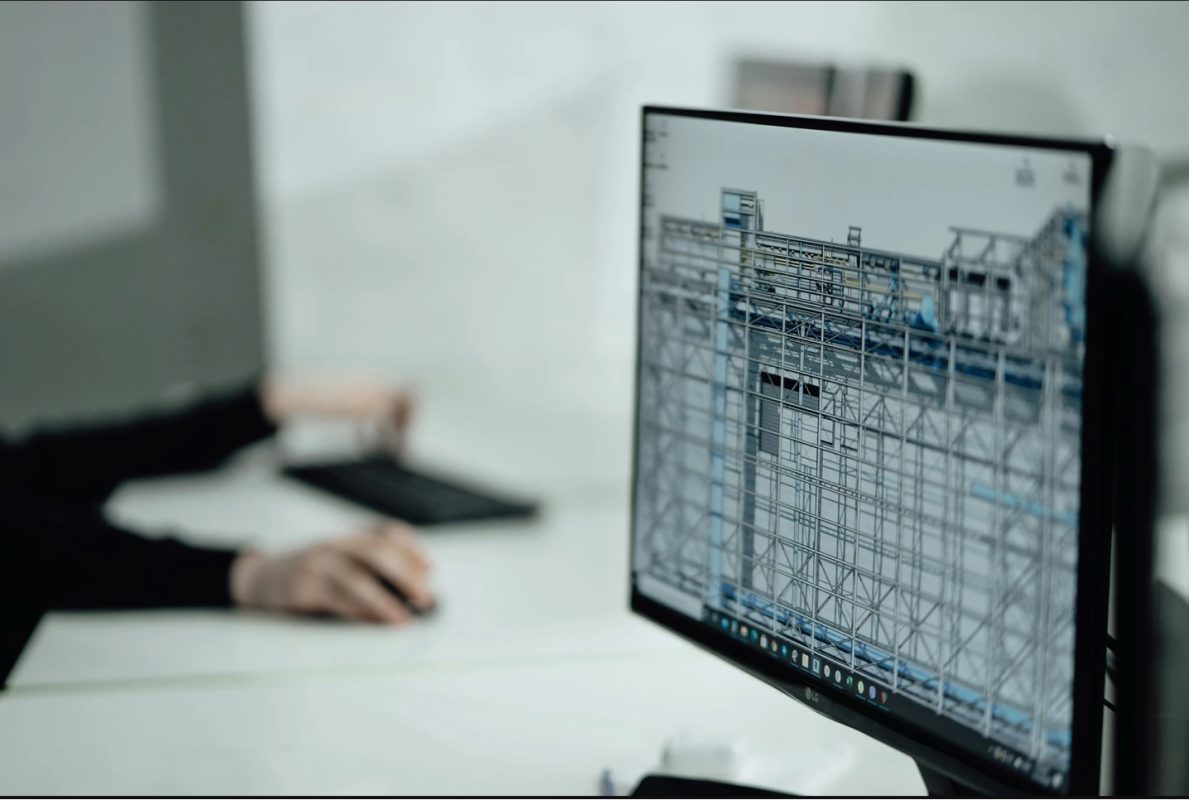Digital technologies are playing an increasing role in the construction industry, revolutionising design, construction and operations. One such technology is digital twin technology, which is all about connecting the real and virtual worlds.
In this article, we will look at how it works and how it increases efficiency.
What is digital twin?
A digital twin is a virtual model that is a digital replica of a real construction project or building. This model is constantly updated at every stage of construction, providing an accurate picture of the current state of the building based on real-time data. The digital twin uses point cloud modelling, laser scanning and other measurement technologies to ensure that the digital model reflects the physical reality as closely as possible.
Point Cloud Modelling and Laser Scanning
Point cloud modelling is a fundamental solution for creating digital twins, where laser scanners capture millions of points in the target area. These points are given spatial coordinates from which computer software creates a three-dimensional model. This method is particularly useful for coordinating construction sites, as it allows designers and contractors to get an accurate picture of the construction site before work starts.
Construction Site Coordination
Digital twins have become indispensable tools for coordinating construction projects. They allow all project stakeholders to access construction site data in real time, improving communication and reducing the potential for errors and delays. Digital twins enable project managers and engineers to anticipate and manage potential problems, minimising project risks.
Using digital twins in the design process
During the design phase, the digital twin model provides designers with a ‘virtual rehearsal room’ where they can experiment with different designs and solutions without having to consider the physical consequences. Everyone, from architects to engineers, can see the effects of changes in real time, allowing them to better understand how the building will behave under different conditions.
It is cost-effective because the digital twin model allows design errors to be identified at an early stage, avoiding expensive modifications at the construction stage. This can result in significant cost savings as correcting design problems at later stages becomes much more costly.
The digital twin also allows energy efficiency, space utilisation and other important factors to be optimised during the design process. Simulations allow designers to try out different scenarios to find the best solution.
Benefits of the digital twin in operation
Once the building has been handed over, digital twin technology remains important for optimising operational processes.
- Maintenance: the building’s digital twin can continuously monitor the condition of the building and predict areas that need maintenance. This allows operators to proactively address potential problems before they become serious or require expensive repairs
- Energy management: digital twin models are also used to monitor and analyse energy consumption. Data can help operators optimise energy use, reduce costs and improve the building’s ecological footprint.
- Security: the technology also improves building security, allowing security systems to be managed more efficiently and respond faster to potential security threats.
Its application therefore not only provides benefits in the design and construction phases, but also supports cost-effective, safe and efficient operation throughout the life cycle of the building.
The relationship between digital twin technology and BIM
With Digital Twin, architects and designers can easily modify and optimise their designs before construction starts. And BIM (Building Information Modelling) makes it easier to plan, implement and maintain the construction process. Digital twin technology and BIM work together to increase the efficiency and quality of construction projects and reduce the potential for errors. By integrating the two technologies, the design and construction process can be simplified and made more cost-effective.
Efficiency and cost optimisation
Digital twin technology is revolutionising the construction industry, enabling projects to be delivered faster, more economically and sustainably. Construction professionals and companies should take advantage of this innovative technology to improve the efficiency of their projects and increase their market competitiveness.



